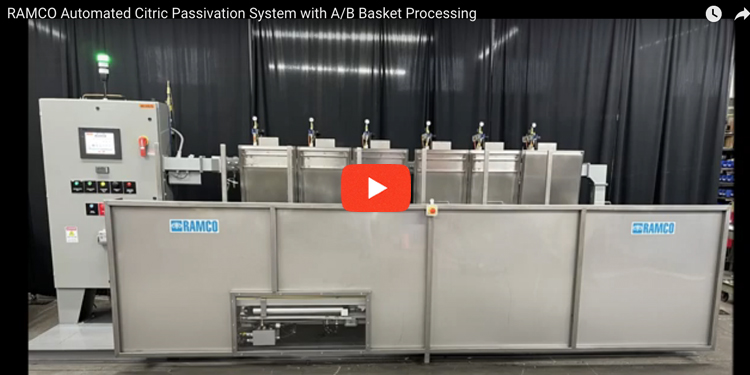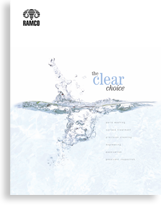The Essentials of Passivation
Passivation principles and processes have been around for over one hundred years and during that time it has seen an evolution of both its basic practices and standards. However, it has remained an industrial constant as a procedure used post-fabrication on machined parts made of pure metals like titanium or tantalum, but is most frequently performed on stainless steel — an alloy comprised of iron, chromium and nickel.
As with just about everything that is manufactured, the American Society of Testing and Materials (ASTM International) is the to go-to source for the latest reports and papers on accepted industry standards. Defined by ASTM in a variety of ways, the generally accepted explanation of passivation is a series of operations that:
- Eradicates the cumulative exterior build-up of iron deposits and other superficial substances on stainless steel, titanium or tantalum without adverse impact on the stainless steel itself.
- Imparts a safeguarding oxide coating that is less susceptible to rust, damaging reactions to air and other corrosive elements.
In addition to these, the benefits of the passivation process include extending the life of the material, as well as curtailing the need for frequent maintenance.
While stainless steel is naturally resistant to corrosive processes, that resistance is potentially compromised by external conditions and factors that can erode its inherent protective properties. The immediate environment in a facility such as a factory or machine shop commonly exposes materials to dust, soil, or the byproducts of any number of other materials that are released by grinding or other procedures. Fine particulate matter from substances such as iron, wood, aluminum, etc., may embed themselves into the surface of the steel. In addition, particulate residue from lubricants or solvents used on other machinery can be detrimental to the integrity of stainless steel parts.
RAMCO’s Passivation Lines
Prior to any passivation regimen, the surfaces of all parts must be thoroughly cleaned to remove all contaminants. The specific type and methods for passivation vary, depending upon the attributes of the parts themselves as well as their intended use and the corrosives and contaminants they may be exposed to. RAMCO’s extensive product line meets our customers’ needs with customizable systems, always with an eye toward unmatched results, increased productivity, reduced labor and cycle time. In general they take the following variety of configurations:
- Single Stage Passivation
- Passivate – Rinse
- Passivate – Rinse – Rinse – Dry
- PreWash – Rinse – Passivate – Rinse – Rinse – Dry
Passive Layer Integrity and Quality
Chromium’s intrinsic corrosion resistant attributes are activated with exposure to air and, in particular, oxygen. The chromium forms stable oxides and hydroxides that adhere to the surface of the stainless steel, enabling it to resist corrosive elements that come into contact with it from the external environment. This natural chemical reaction decreases oxidation by virtue of its electronic conductivity, effectively impeding the erosive circuit.
However, these inherent anti-corrosive properties are subject to degradation as contaminants come into contact with the parts’ surfaces over time. Other passivation measures may not always result in ideal passive (the absence of chemical reactivity) conditions. Welding, for example, naturally produces a colored oxide integument on the steel’s surface. A process like hot rolling can result in black scale. Neither of these are particularly effective for protection.
Stainless steel is routinely subjected to procedures such as cutting, grinding, milling and welding. In addition to irregular surface features, these processes leave behind both loose and/or attached particles and traces of other contaminants. In such instances, passivation is typically called for.
Arguably the most prevalent and effective passivation method is to submerge all parts into a bath of nitric acid (commonly used to dissolve gold from circuit boards) in concentrations ranging from twenty to fifty percent. Temperatures of this bath also vary, with a standard limit of about 160° Fahrenheit. It’s fairly common to introduce chromate salt to the bath as well. Immersion in this bath has as its goal the gradual breakdown of unwanted corrosives. Over the course of an hour or two, chips, adherents such as soil grease or other debris – all known colloquially as “swarf” – are cleaned off and washed away. Safety measures for workers are always put in place for this type of passivation due to nitric acid’s odor and fumes. It also requires that special care be taken as related to its disposal and other environmental issues.
A powerful but less volatile cleaning method that has gained wide acceptance is the use of citric acid immersion baths.
 Since citric acid occurs naturally in citrus fruits like oranges, as well as being a very common ingredient in all manner of food products, there are far fewer environmental concerns associated with it.
Since citric acid occurs naturally in citrus fruits like oranges, as well as being a very common ingredient in all manner of food products, there are far fewer environmental concerns associated with it.
For more information on choosing a passivation system for your facility, please contact our factory at 800-553-3650.


